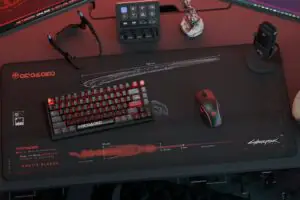In Rainbow Six: Siege, explosions are more than just a loud sound and a way to do damage. Explosions can open up new pathways, destroy defenses, give vision on enemies, and completely change the way a game runs. There’s a pretty high chance you won’t be playing a game of Siege that doesn’t have an explosion at some point, so the developers over at Ubisoft thought it would be a good idea to go ahead and deliver some more information on how they work.
In their latest developer’s blog, the developers delve into blast radius and shape, raycasting, determining damage, metadata, and everything else that affects an explosion. They also included a video that we’ve placed below, but seeing as it’s as long as a feature-length film, we’ll go ahead and give you a tl;dr in the rest of this article.
“The damage and destruction that happens once an explosion goes off is calculated in a matter of milliseconds,” they explain. “Players will receive visual and audio cues, and take damage if they are caught in the blast. To make all this possible, our explosion engine must go through several steps.”
To begin with, explosions are calculated and defined by data points that help determine the shape and radius of an explosion. It also depends on the item used – frag grenades and claymores, for example, have different explosions.
The calculations begin with raycasting, which are exploratory lines traveling outwards towards nearby entities and their query points within the blast. These query points, which each possible target has, help the explosion engine decide how vulnerable an Operator is to explosions. Distance, size, armor, environment, and several other factors come into the equation here.
Once these raycasts are complete, the metadata helps define what it is, how it interacts with other elements, and how the explosion will be impacted by this target. Once all of these factors are accounted for, damage is determined using the results, helping to decide exactly how much damage an operator should be taken given their distance and surroundings.
And there you have it! In the space of a scant handful of milliseconds, the game engine processes dozens of different data points to see whether that broken claymore should’ve actually killed your or not, or whether that grenade really was close enough to take you out.
Moving forward, the team is looking at introducing shrapnel as an explosion mechanic. This will allow the damage to be more realistic, as well as affecting the environment differently, with some surroundings even serving to increase the damage that would be taken. This will also help give a clearer view of explosions, as shrapnel holes will be left behind.
So now that you know how the explosions work, make sure you stay out of the way of the frags being tossed into the window!





